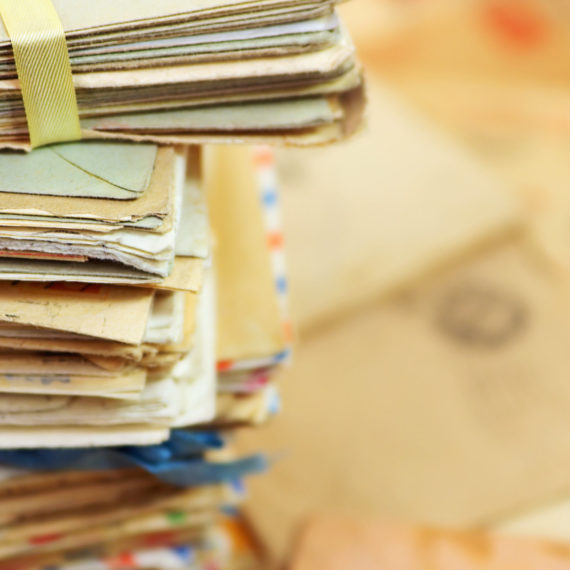From 5,600 emails in your inbox to zero – can it work for someone who’s never had an empty inbox? There are plenty of tips out there for achieving Inbox Zero. See for yourself.
I’m in pretty on top of my work schedule. I enter all my tasks in a to-do list, which I created using a simplified variation of the Getting Things Done method. I usually plan each day the previous day. And I understand my own biorhythm well enough to know at which time of day I can best perform which tasks. (Unless meetings get in the way. But that’s another story.)
What’s the point of an empty inbox anyway?
But I’ve never managed to achieve “Inbox Zero” – a completely empty inbox. I belong to the category of people with five- or six-digit numbers of emails in their inbox. A blog post by the informatics professor and productivity guru Cal Newport (author of Deep Work) prompted me to address this issue. And take you on this journey with me – because the new year is a great time for a clear-out!
But why is Inbox Zero even desirable? I can’t explain it scientifically. Having a better overview of new emails is one reason. But for me, the sense of order is simply reassuring: all my work is done, my inbox is empty. It’s the same feeling as when the kitchen is cleaned up and the dishes are stowed away again after dinner.
But back to my inbox, where, according to Outlook, around 5,600 emails have piled up.
In this article, I’ll focus on Outlook from Microsoft 365. But of course, these tips also work with other email programs and webmail.
The easy bit: cleaning up with Outlook search folders
First of all, I want to deal with old newsletters, outdated messages from company applications and other automatically generated emails. Since I no longer need these, I’ve decide to delete them. And Outlook’s search folders are going to help me do so: these virtual folders show me all the mail from a particular sender defined in the search criteria (“newsletter@sender.ch”). I select all the emails in the search folder (CTRL-A) and delete them (DELETE).
After six rounds, each with different search criteria, I’ve removed around 800 emails from my inbox. That’s 15% of them – the easy bit.
I prefer search folders over quick searches for this task. Searches only give me a maximum of 75 hits, not all the emails that meet the criteria.
The tricky bit: cleaning up emails according to topic
Now we come to the more complex step: manual cleanup of the remaining 4,800 emails. A tip from Cal Newport helps me here. He recommends a step-by-step approach. In a nutshell, here’s how it works for me:
- I create a folder called “cleanup folder” in my inbox. This is my interim storage space for the emails I want to clean up.
- Now I go through the inbox and transfer emails on a particular topic to the cleanup folder. In my case, for example, news related to articles or inputs on newsletters.
- Then I move to the cleanup folder, which is now full of thematically related emails. I move them to their final destination or delete them.
- Then I go back to step two again, this time with a different topic.
After I’ve created the folder, I set up a Quick Step in Outlook with a corresponding keyboard shortcut. Now, when I select an email and press CTRL-SHIFT-9 – my chosen shortcut – the Quick Step will transfer the email to my cleanup folder.
I decided to start at the bottom of my inbox, with the oldest emails. That’s more motivating, because I can see the progress of my work via the date – the closer it is to today, the more I’ve achieved.
Getting in the flow
I start with my first category of emails. I move conversations relating to the creation of articles into the cleanup folder. And from there, I move them to their final destination. I find this surprisingly easy, because I’m always working on the same topic. The split second I need to mentally switch to another topic is no longer necessary. I get into a real cleanup flow and work on reducing the stack of emails for an hour.
Cal Newport’s method really works for me. But I’m not totally consistent. If I find an email in my inbox that I can delete, I do it right away. And I notice that two months’ worth of emails per topic is enough for each step. In my case, that means about 400 emails.
An efficient route to Inbox Zero
Search folders, keyboard shortcuts and topic-based cleanup all speed up my plan to get to Inbox Zero. However, an approximate calculation of the time involved shows me that I can’t achieve my objective as quickly as I thought. I’ll have to finish the project when things are quieter. But at least I managed to remove a quarter of the emails from my inbox.
In order to achieve my goal, I’m going to take the following steps:
- Block out fixed appointments in my calendar to clean up emails at 4 pm each Friday.
- Move emails I’m working on to the correct folder immediately. Then I only have to “touch” each message once.
- Before my next holiday, I’ll find a spare hour (or two) to empty my inbox completely.
Happy cleaning!


